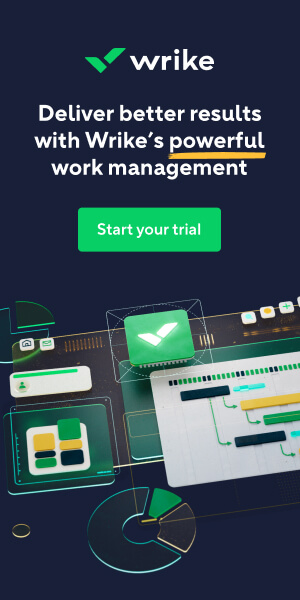Project managers generally encounter three types of projects: creative, technical, or a hybrid of the two. Each of these are very different efforts to manage and require separate teams to conceptualize and build either creative or technical requirements and features. Projects like a website build, for example, involve both a creative, visual part — like branding and interface design — as well as a technical back end. Different teams and roles are needed for each project.
Creative Projects vs Technical Projects
Creative Projects
A creative project is unique in that its focus is on a visual experience, or something a user or audience sees, hears, and interacts with. A product animation, 3D print, marketing video, or a company rebrand are all examples of creative projects.
These types of projects are unique, in that:
- They have uniquely designed visual deliverables that require multiple drafts and reviews to finalize and approve.
- They are led by a Creative Director who manages a creative team and makes final decisions on deliverables before they are presented to a client.
- The creative pace is slower and considers variations and options to choose from, which are narrowed down into the final product.
- The creative team is fluid in what they produce and follow a project timeline based on estimates, which is more often managed through the waterfall method.
- Deliverables require client interaction and several rounds of feedback by various stakeholders to incorporate into future drafts and versions.
Read more: 6 Reasons Why You Need a Creative Team for Your Project
Technical Projects
A technical project is different from a creative project in that its focus is on a technical build of a feature set that performs a function, or a change to something existing. This may be something the end user experiences through interaction, or may solely affect the back end. A BI application, CMS migration, new business software, and email system infrastructure upgrade are all examples of technical projects. They typically involve application development and multiple rounds of quality review and user acceptance testing before release.
Here are some additional features of technical projects:
- Deliverables are more functional and not necessarily visual, such as the creation of a back-end database, middleware connection of systems, and front-end code-based experiences.
- A Scrum Master leads an agile team of developers and engineers in a fast-paced, defined, and efficient development environment.
- A more structured project environment with a set timeframe defined for specific requirements to be developed in a particular order.
- Features and functionality either work or they don’t, and this is determined through extensive testing.
- Feedback is provided through data collected, use cases, and pilot launches.
- There is often minimal-to-no client interaction needed until a deliverable is released for further testing or use.
Read more: Difference Between Scrum Master & Project Manager
How Are These Projects Similar?
Creative and technical projects are similar in that they involve a phased approach to deliverables — interface, prototype, alpha, beta, and gold builds for creative projects, and iterations of features and functionality for technical ones. Both project types require review and thorough testing of deliverables, and approval by multiple stakeholders.
Further, the success or failure of both types of projects can be affected by corporate bureaucracy and culture through budgets, change requests, prioritization, and differences of opinion on scope alignment by leadership.
How to Successfully Manage a Hybrid Team
Many projects are hybrid, including both a creative and a technical component, which gives a project manager multiple teams to lead and different “languages” to speak. This can be achieved successfully through careful planning, communication, and collaboration with team leads and other project managers and Scrum Masters.
Project managers with hybrid projects can find success through the following tips:
- Check in with teams regularly for status updates by facilitating daily stand ups, weekly status checks, and one-on-one meetings. This will drive progress, identify risk, and head off blockers early.
- Use software tools to collaborate and plan projects and resources, and track project status down to the task level.
- Bridge the gap between creative and technical teams and details by engaging cross-functional team leads. Help guide them through project details and how they connect.
- Be clear on expectations, goals, and timelines with everyone involved, and hold them accountable.
Projects that are both creative and technical may be more challenging for a project manager to coordinate because there are so many parts to track. However, often these types of projects are the most interesting, challenging, and rewarding experiences for project managers, creatives, and technical teams to collaborate on.
Read next: 10 Must-Have Project Management Skills New PMs Overlook
Featured Partners: Project Management Software
If you’re interested in learning more about top rated project management software, the editors at Project-Management.com actively recommend the following:












